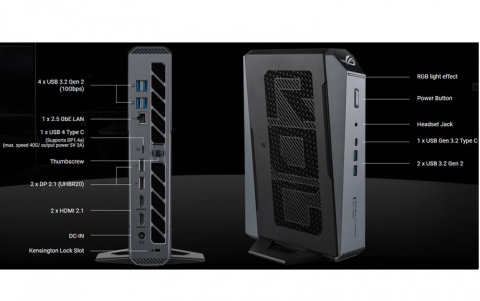
Sony Showcases Ultra-thin OLED Display Prototypes
Sony showcased its advanced OLED (organic light emitting
diode) technology in Japan last week putting on show an OLED
display prototype that is just 0.3 mm thick.
 Visitors of the Display 2008 International FPD expo last
week in Tokyo, Japan had the chance to see the first 11-inch
0.3mm OLED panel that can display content at resolutions of
960?540 pixels. Sony put the prototype on display in order
to show the potential strengths of its OLED technology,
since it is not expected to reach the market anytime soon.
The company followed the same manufacturing principles it
used for the development of the XEL-1 11-inch panel,
currently available in the U.S. and Japan.
Visitors of the Display 2008 International FPD expo last
week in Tokyo, Japan had the chance to see the first 11-inch
0.3mm OLED panel that can display content at resolutions of
960?540 pixels. Sony put the prototype on display in order
to show the potential strengths of its OLED technology,
since it is not expected to reach the market anytime soon.
The company followed the same manufacturing principles it
used for the development of the XEL-1 11-inch panel,
currently available in the U.S. and Japan.
The company also showcased another 3.5-inch panel, which had QVGA resolution (320 pixels by 240 pixels), featuring an even thinner glass substrate to reduce the thickness to just 0.2 millimeters. Due to their thinness, OLED panels consume less power than LCDs, display fast-moving images better and offer good color reproduction. Once their production become cheaper, OLEDs are expected to replace the LCD panels.
Sony's Internet TVs
In related news, Sony will reportedly release television sets that enable users to access a wide range of programs on demand by simply hooking them up to the Internet. The information was reported by the Nikkei last the weekend, without citing sources.
Japanese broadcasters and consumer electronic firms are expected to draw up a common Internet TV standard in June, then begin rolling out compatible services and products toward the end of the year. This would allow Japanese consumers to enjoy most broadband TV programs using a single Internet-enabled TV, rather than buying different receivers or TV compatible with a given service provider. Sony, Panasonic, Hitachi, Sharp and Toshiba are expected to release new TVs compatible to the new common Internet TV standard next year.
Japanese telecom firms and consumer electronics makers intend to promote their common Internet TV standard for worldwide use by urging the International Telecommunications Union to adopt it as the global standard, Nikkei said.
 Visitors of the Display 2008 International FPD expo last
week in Tokyo, Japan had the chance to see the first 11-inch
0.3mm OLED panel that can display content at resolutions of
960?540 pixels. Sony put the prototype on display in order
to show the potential strengths of its OLED technology,
since it is not expected to reach the market anytime soon.
The company followed the same manufacturing principles it
used for the development of the XEL-1 11-inch panel,
currently available in the U.S. and Japan.
Visitors of the Display 2008 International FPD expo last
week in Tokyo, Japan had the chance to see the first 11-inch
0.3mm OLED panel that can display content at resolutions of
960?540 pixels. Sony put the prototype on display in order
to show the potential strengths of its OLED technology,
since it is not expected to reach the market anytime soon.
The company followed the same manufacturing principles it
used for the development of the XEL-1 11-inch panel,
currently available in the U.S. and Japan.
The company also showcased another 3.5-inch panel, which had QVGA resolution (320 pixels by 240 pixels), featuring an even thinner glass substrate to reduce the thickness to just 0.2 millimeters. Due to their thinness, OLED panels consume less power than LCDs, display fast-moving images better and offer good color reproduction. Once their production become cheaper, OLEDs are expected to replace the LCD panels.
Sony's Internet TVs
In related news, Sony will reportedly release television sets that enable users to access a wide range of programs on demand by simply hooking them up to the Internet. The information was reported by the Nikkei last the weekend, without citing sources.
Japanese broadcasters and consumer electronic firms are expected to draw up a common Internet TV standard in June, then begin rolling out compatible services and products toward the end of the year. This would allow Japanese consumers to enjoy most broadband TV programs using a single Internet-enabled TV, rather than buying different receivers or TV compatible with a given service provider. Sony, Panasonic, Hitachi, Sharp and Toshiba are expected to release new TVs compatible to the new common Internet TV standard next year.
Japanese telecom firms and consumer electronics makers intend to promote their common Internet TV standard for worldwide use by urging the International Telecommunications Union to adopt it as the global standard, Nikkei said.





















